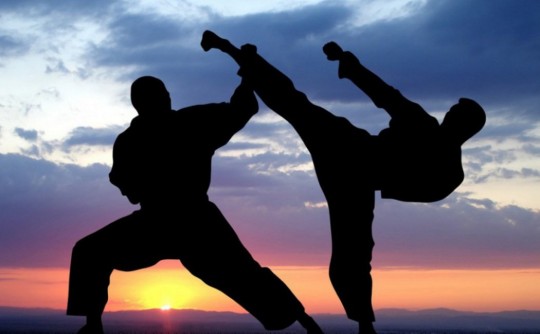One of the most popular search queries on the Internet is the issue of which martial arts are better than taekwondo.This question may be answered from places like here https://smartmma.com/taekwondo-vs-karate/, it’s not the martial arts style that wins, but the warrior. It is the level of technical training that will be crucial for the victory over the enemy, the ability to focus on the fight or the fighter's condition at that particular moment. So, for example, comparing karate and taekwondo, we should think about the differences in technical behavior.An uninitiated person needs to understand the meaning and theory of these disciplines in order to distinguish between karate and taekwondo. For you better understanding you can refer here https://smartmma.com/taekwondo-vs-karate/
Don't wanna be here? Send us removal request.
Text
What Is Karate? Techniques Used In Karate
Karate is Japanese martial art. It is described as self-defense without using arms but by hitting sensitive body areas, such as your hands, elbows, knees, and feet.
Taekwondo vs karate is learned as four unique features. These unique features are as given below they are:
Art Work
Game
Fighting Game
Self-Defense Instruction
The traditional Japanese training focuses on the opponent's emotional attributes like patience, bravery, honesty, and leadership.

In Japanese characters, the term karate is a combination of Kara and Te. "Kara" means void and "Te" means hand, which is collectively known as empty hand. The "dojo" region is another aspect of this; where all activities take place.
There Are A Variety Of Rules That Make It Safe:
Some of the rules in taekwondo vs karate are as given below. They are,
Some for removing shoes
Trying not to be late
Wear the correct uniform
Several other directives ban food or beverages other than water
Uphold cleanliness
Refuse to talk unnecessarily
Disclose accidents
Respectfully handle arms and training equipment
Techniques Used In Karate:
There are four main techniques used in taekwondo vs karate. They are
(Mae-Geri) Front kick
Jodan Uke (Top Blocks)
Beats to the knee (Hiza-Geri)
Elbows (ate Hiji)
Heel (shotei Uchi) kicks
Now let us learn them in detail.
(Mae-Geri) Front Kick:
"Frontal kick" is a basic but highly effective form of attack, usually directed at the knees, groin or stomach of a competitor. Front kicks to the groin or knees are intended to amaze an opponent.

The opponent instantly hits one leg, making sure that the opponent's body comes into contact with your foot. On the other side, the front kicks toward the chest are harder, the karateka puts more weight behind their kicks to bring heavier strokes.
While the kicks at the front may seem very painful, it is crucial that you do your best not to damage your opponent too much when attempting one during a lesson or match.
Jodan Uke (Top Blocks):
The "upper block" (or "up block") is a defensive movement in the head and upper body intended to repel punches and kicks.
Also, this main block is useful to set up karateka for a fast counterattack. What works in the upper block?
It's really simple: The karateka positions his left arm at the side of the waist while preparing to block an assault, his arm bent so that the fist faces the attacker.
Simultaneously the right arm of the karateka is lifted, next to his head. The karateka immediately covers his face with his right arm after launching an attack and, for this reason, will avoid the hit.
At the same time, their left arm advances, catching the attacker in the stomach while being taken by surprise. It's a perfect counterattack move in general.
Beats To The Knee (Hiza-Geri):
What can annoy him if you meet a male adversary with a fast knee in his groin? "Knee bumps" may be used to strike a groin, stomach or even an attacker's mind, depending on their versatility.
The action is done at close range and has the karateka raise the leg and drive the knee into the attacker's groin.
When karateka draws its opponent to him at exactly the same time as the knee comes into contact, a knee attack can be even more damaging.

Elbows (ate Hiji):
The "attacking the elbow" strategy in taekwondo vs karate is as aggressive as it would seem. Critical to close-up taekwondo vs karate styles, see that karateka is able to drive an elbow in the face of the opponent.
It may sound more like a Saturday night wrestling tactic for drunken fights, but it's actually a difficult movement to master the elbow attack. Composed of a fast-ascending punch, startling an intruder is an excellent method, but if delivered very slowly, it is easily blocked.
In competition, retaining the potential of an elbow attack in moderation is important, because a careless blow could split the cheekbone of an opponent.
Heel (shotei uchi) Kicks:
The "palm heel attack" describes a sudden and effective strike aimed at an opponent's head. The violent action sees the karate kick, the right arm, smashing his attacker's face with his hand palm.
Even if they are easily blocked when delivered too slowly, bumps on the palm's heel will give a surprise attack on the karateka arsenal.
Potentially disorienting an opponent, hitting the heel of the palm in every sense of the word is a surprising move.
1 note
·
View note